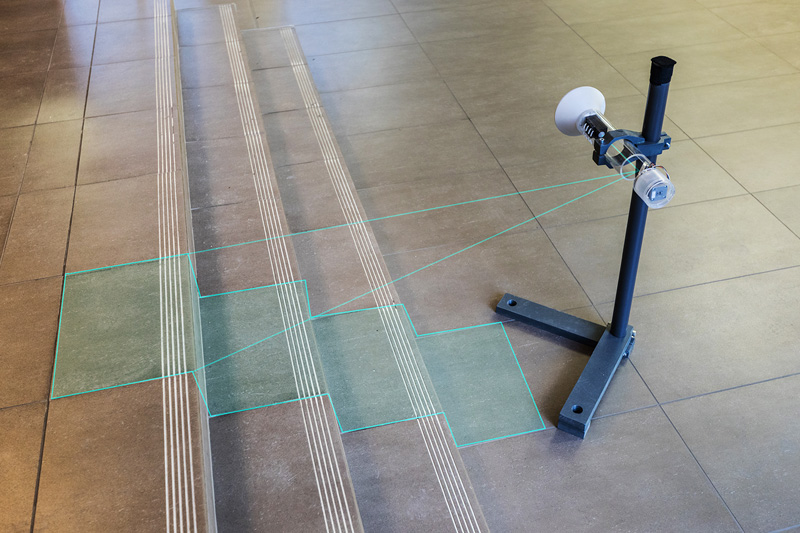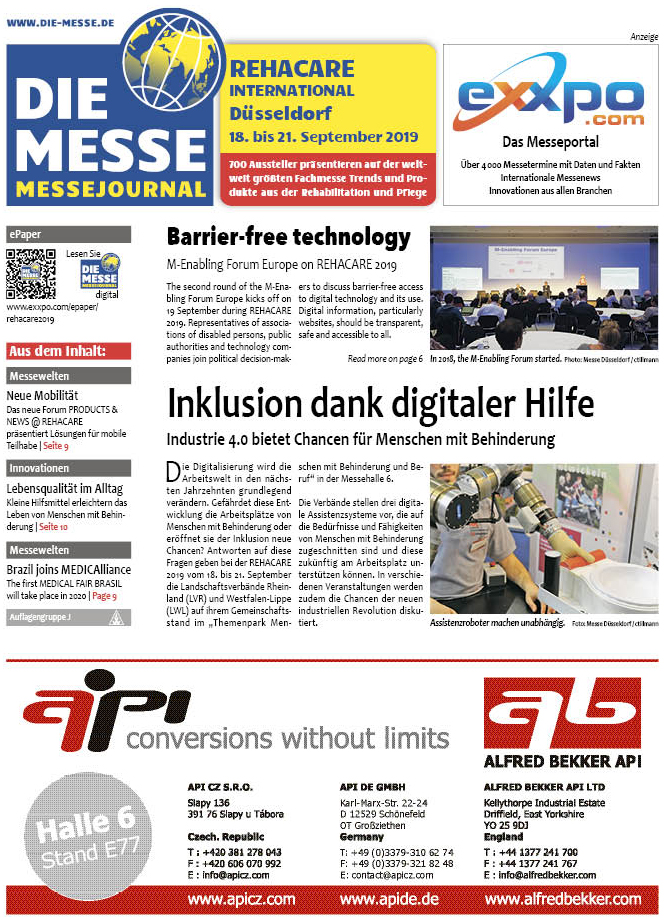26 September 2018
The information gained can be employed in orthopedic technology to control and stabilize prostheses or wheelchairs. Stairs, stony paths and tiered levels – for wheelchair users, these obstacles are often insurmountable. This can also be dangerous for people with leg prostheses. Bernhard Kleinert from Fraunhofer IPA: “The research aimed to turn wheelchairs and prostheses into intelligent systems.” He and his team developed a sensor system that helps to recognize obstacles and overcome them.
The central element of this new technology consists in using radar-on-chip sensors to scan the environment. Radar chips have several advantages over ultrasonic or laser sensors: They are significantly lighter and smaller, so they are particularly well suited to applications centered on mobility, and they also function outside of closed spaces. This is a huge advantage for use in orthopedic technology, since patients should be able to use the new features in as many scenarios as possible.
However, the radar chips do have a disadvantage: they only have one antenna for sending and receiving radar signals. Therefore, only objects that are directly hit by the radar beam are visible. This means that the reading is only one-dimensional, which is not enough to locate obstacles. Bernhard’s team used a trick to create a two-dimensional image from the one-dimensional readings. The project leader explains: “Similar to a laser scanner, which scans different points on a surface, we combine several reflections from different perspectives.”
The different perspectives occur almost spontaneously when the radar sensor is moved, for instance when someone wearing a prosthetic limb equipped with a sensor moves. Generating different perspectives is much more complicated when it comes to the sensor integrated into a wheelchair. Here, a mirror helps to direct the radar beam this way and that. With the different readings generated, an algorithm developed by Fraunhofer IPA creates a 2D image of the surrounding, which can be used to precisely locate the obstacle down to a few centimeters.
https://www.ipa.fraunhofer.de/
Intelligent wheelchairs: radar helps patients
If you use a wheelchair or have a prosthetic leg, small obstacles can become insurmountable barriers. Researchers at Fraunhofer Institute for Manufacturing Engineering and Automation IPA have developed a way to detect uneven ground, tiered levels or steps using radar.
 Photo: Fraunhofer IPA, Rainer Bez Photo: Fraunhofer IPA, Rainer BezThe radar-on-chip sensor helps to recognize obstacles and overcome them. |
The central element of this new technology consists in using radar-on-chip sensors to scan the environment. Radar chips have several advantages over ultrasonic or laser sensors: They are significantly lighter and smaller, so they are particularly well suited to applications centered on mobility, and they also function outside of closed spaces. This is a huge advantage for use in orthopedic technology, since patients should be able to use the new features in as many scenarios as possible.
However, the radar chips do have a disadvantage: they only have one antenna for sending and receiving radar signals. Therefore, only objects that are directly hit by the radar beam are visible. This means that the reading is only one-dimensional, which is not enough to locate obstacles. Bernhard’s team used a trick to create a two-dimensional image from the one-dimensional readings. The project leader explains: “Similar to a laser scanner, which scans different points on a surface, we combine several reflections from different perspectives.”
The different perspectives occur almost spontaneously when the radar sensor is moved, for instance when someone wearing a prosthetic limb equipped with a sensor moves. Generating different perspectives is much more complicated when it comes to the sensor integrated into a wheelchair. Here, a mirror helps to direct the radar beam this way and that. With the different readings generated, an algorithm developed by Fraunhofer IPA creates a 2D image of the surrounding, which can be used to precisely locate the obstacle down to a few centimeters.
https://www.ipa.fraunhofer.de/
More news about "Rehacare":
19 October 2018
Rehacare: Mobility for people with disabilities
Innovations focusing on rehabilitation and care ensured that the halls were full at Rehacare 2018 in Düsseldorf, which came to a close on September 29. Around 50,600 visitors gained new information from nearly 1000 exhibitors from 42 countries. (more…)1 November 2017
Rehacare 2017: Independent living in focus
Mobility and home care were top topics at the Rehacare International 2017 in Düsseldorf, where about 39,000 visitors gained information on the specialist trade fair and conference on support and knowledge on independent living. (more…)16 October 2016
Full exhibition halls in Düsseldorf: A total of 49,300 industry professionals and people affected by disabilities visited Rehacare, the market for opportunities for self-determined living. (more…)
| FAIR NAVIGATOR PHARMA / MEDICAL TECHNOLOGY | |
|---|---|
|
| E-PAPER REHACARE |
 |
